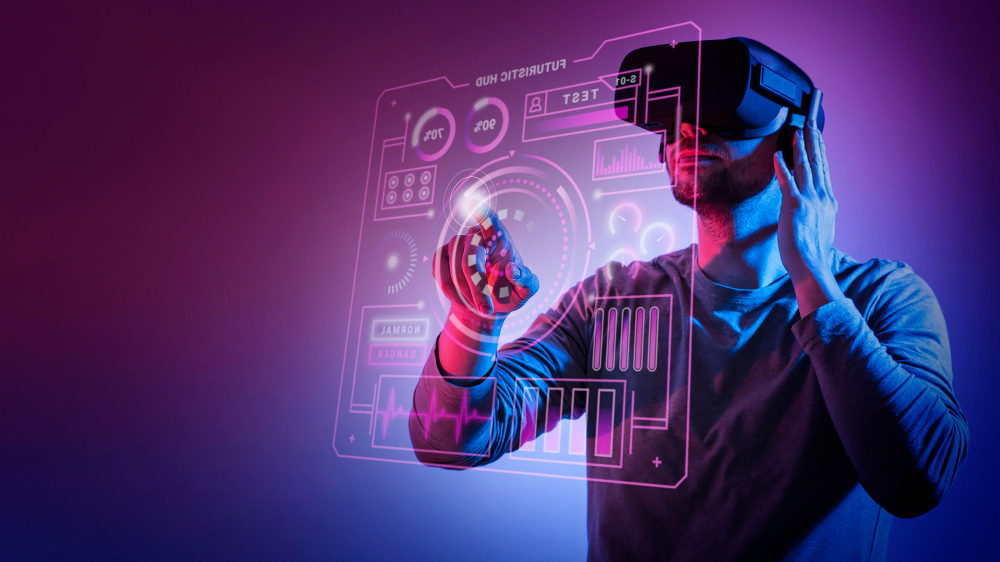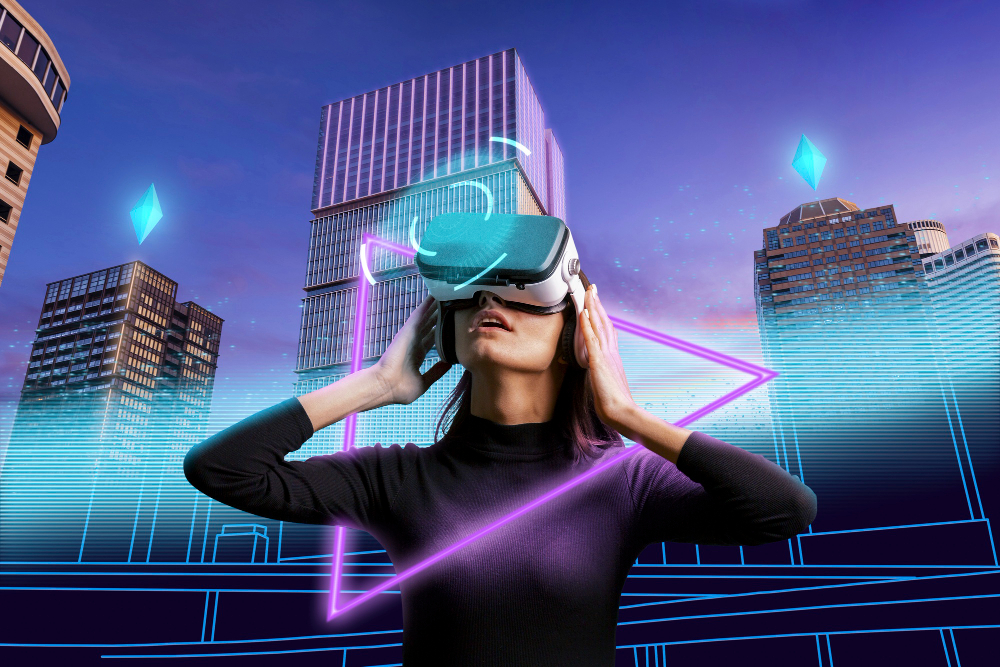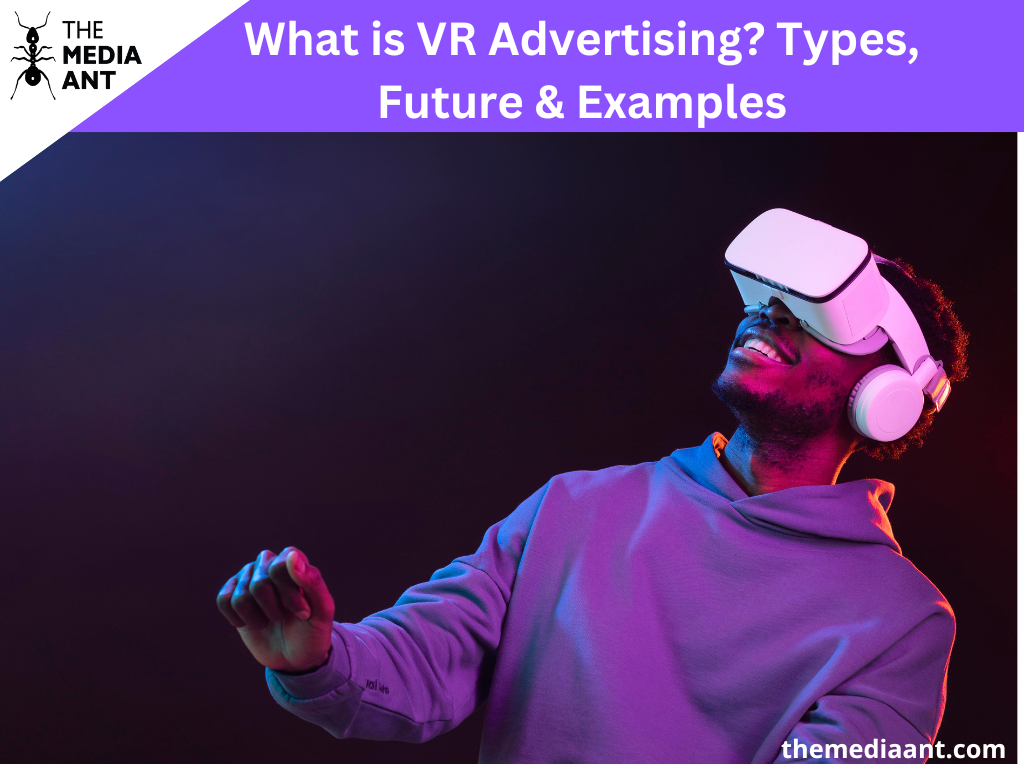The Power of Virtual Reality Advertising: An Introduction
Have you ever tried a product and felt disconnected from it, like you couldn’t fully grasp its potential? Well, imagine immersing yourself in a new world, where that product becomes an integral part of your experience. That’s the power of virtual reality in advertising. By offering users a completely immersive experience, where they can connect with the product in a whole new way and create associations they never thought possible.
Virtual Reality (VR) technology has taken the world by storm, offering immersive experiences that blur the lines between reality and simulation. With its ability to transport users to another world, VR is becoming the next frontier in advertising.
Companies are recognizing the potential of VR as an innovative way to engage with their target audience, create memorable brand experiences, and ultimately drive sales. In this article, we will explore the world of VR advertising, its types, examples, and how it is transforming the advertising industry.
Understanding VR Advertising: Definition and Types
What is VR Advertising?

VR advertising refers to the use of virtual reality technology to create immersive advertisements and marketing experiences for consumers. In VR advertising, companies use VR headsets to create 3D simulations of products, services, or brand experiences, allowing consumers to interact with them in a virtual environment.
The goal of VR advertising is to provide consumers with a more engaging and memorable experience than traditional advertising methods. By immersing consumers in a virtual environment, VR advertising can create a stronger emotional connection with the brand and improve brand recall. VR advertising can be used for a variety of purposes, such as product demonstrations, experiential marketing, and virtual events.
VR advertising is a relatively new and rapidly evolving field that offers marketers new ways to reach and engage with consumers.
Along with VR, one more term is becoming the talk of the town, i.e., metaverse advertising, let’s have a look at what it really is.
What is Metaverse Advertising?

Metaverse advertising refers to the promotion of products or services in virtual worlds, such as online games or virtual reality environments. The metaverse is a term used to describe a collective virtual shared space where users can interact with a computer-generated environment and other users through their avatars.
In metaverse advertising, companies can create branded experiences, such as interactive games, virtual showrooms, or other forms of immersive content, to engage with potential customers. These experiences can help to create a deeper emotional connection between the brand and the consumer, leading to increased brand loyalty and sales.
Metaverse advertising is becoming increasingly popular as more people spend time in virtual environments. It offers a unique opportunity for brands to reach highly engaged audiences in an immersive and interactive way. As technology continues to advance, we can expect to see even more innovative and creative forms of metaverse advertising in the future.
Key differences between VR and Metaverse advertising
Virtual reality (VR) advertising and metaverse advertising are two ways of promoting products or services in virtual environments. While VR advertising involves creating immersive experiences that take users to a virtual world where they can interact with branded content, metaverse advertising is focused on advertising within shared virtual spaces. The level of immersion is higher in VR advertising compared to metaverse advertising, but both offer unique opportunities for brands to engage with consumers. The choice of strategy depends on the campaign goals and the target audience.
Now that we have an understanding of what VR advertising is let’s have a look at types of VR advertising that has come a long way since it first became available to the public.
Virtual Reality in Digital Marketing
Virtual Reality (VR) in digital marketing refers to the strategic incorporation of immersive virtual experiences to enhance brand engagement and customer interactions. By utilising VR technology, marketers can create lifelike simulations that allow users to explore products, services, or scenarios in a virtual environment. This fosters deeper engagement, emotional connections, and memorable interactions, ultimately influencing purchasing decisions. VR in digital marketing can be applied through interactive product demonstrations, virtual showrooms, guided tours, or even storytelling experiences. It offers a unique way to differentiate brands, capture attention, and create lasting impressions in a highly competitive digital landscape, elevating the overall effectiveness of marketing campaigns and forging stronger relationships between businesses and consumers.
Types of VR Advertising
VR advertising can take on many forms, including in-game advertising, interactive VR experiences, 360-degree video ads, and virtual product demonstrations.
In-game Advertising
In-game advertising is a type of VR advertising that involves placing advertisements in video games. These advertisements can take on many forms, including product placement, billboards, and sponsored content. In-game advertising is an effective way to reach consumers who are actively engaged in a gaming experience. It can also be used to target specific demographics, such as gamers who are interested in a particular genre of game.

Wiz Khalifa 2050 Tour (2012) promotion visible in a boxing game. Source: RapidFire.com
Interactive VR Experiences
Interactive VR experiences are another type of VR advertising that allows consumers to engage with products and services in a virtual environment. These experiences can be customized to fit the needs of the advertiser and can be used to showcase the features and benefits of a product or service. Interactive VR experiences can be used to create an emotional connection with consumers and can be a powerful tool for building brand loyalty.

Etsy introduced its new virtual home feature in 2021 that enables customers to explore a virtual house filled with curated Etsy items. These homes are personalized and comprise photorealistic and to-scale renderings, effortless navigation, and 360-degree visuals. This feature is currently available only during the holiday season and consists of unique homes that are stocked with holiday decorations, gifts, furniture, artwork, Etsy Design Award winners, and other items.
All products within the house are available for purchase. Shoppers can simply hover over an item and a pop-up window will appear displaying additional information and a link to purchase the product. Etsy’s aim is to assist shoppers in envisioning how the items would look in their own homes.
360 Degree Video Ads
360-degree video ads are a type of VR advertising that allows consumers to view products and services from all angles. These ads can be used to create an immersive experience that allows consumers to explore a product or service in detail. 360-degree video ads are ideal for promoting products and services that have a strong visual component, such as cars, fashion, and real estate.
Red Bull – F1 360° Experience
Red Bull launched a video that became popular featuring a virtual lap of Circuit Park Zandvoort in the Netherlands. The video was filmed from the perspective of 18-year-old Formula 1 driver Max Verstappen. It is anticipated that future videos will allow viewers to switch between various cars during the same race.
Virtual Product Demonstration
Virtual product demonstrations are a type of VR advertising that allows consumers to interact with products in a virtual environment. These demonstrations can be used to showcase the features and benefits of a product and can be customized to fit the needs of the advertiser. Virtual product demonstrations are ideal for promoting products that are difficult to demonstrate in a real-world setting, such as medical devices and industrial equipment.
A product demonstration video by SurveyMonkey showcases the benefits and features of the product and provides a walk-through of its interface. The video is effective because it shows how simple it is to send a survey using SurveyMonkey and how it can integrate with other platforms such as Slack.
Despite being a lengthy video, it is a valuable tool as it enables viewers to understand how SurveyMonkey can seamlessly fit into their daily routine.
Examples of VR Advertising Campaigns
IKEA
To attract more customers to its Hyderabad outlet, IKEA India launched a unique guerrilla marketing campaign using virtual reality. Commuters could experience a tour of the IKEA store during their daily commute by using VR headsets installed inside hired autos in Hyderabad. The campaign featured a 3D gamification element where the furniture appeared to be coming to life on the streets, giving viewers the impression of watching a 3D film.
The goal of the campaign was to demonstrate how using IKEA furnishings in their homes could bring them to life just like they had on the roads during the VR experience.
Mcdonald’s
McDonald’s’ target audience is kids and to make kids eat their happy meals while learning something fun, the fast-food brand incorporated VR in the Happy Meal Box.
The campaign was run in Sweden by incorporating Google Cardboard as VR Headset inside the Happy Meal Box. This reusable box had a game inside which children could play.
A genius entertainment value that teaches kids the importance of recycling through leveraging VR was the purpose of this campaign.
The Takeaways
What’s the best part about these campaigns? It’s not just about the product, it’s about the experience. Take, for example, the various VR campaigns we’ve seen, from exploring an IKEA store during your daily commute to playing a game inside a McDonald’s Happy Meal box. These campaigns offer something unique, something unforgettable that touches people’s hearts and lives in a brand-new way.
Through VR, consumers can reframe their experience with a product, getting closer to the essence of what it offers. And in today’s world, where innovation and creativity reign supreme, the most successful marketing strategies are those that offer an immersive experience that leaves a lasting impact. So next time you’re thinking about advertising your product, consider how you can offer your customers an unforgettable, immersive experience that they’ll cherish forever.
Future of VR Advertising
In the future, VR technology is expected to become more advanced and affordable, making it more accessible to consumers. This will open up new opportunities for brands to create more complex and sophisticated VR experiences, including interactive storytelling, product demos, and even virtual events.
However, there are still some challenges that need to be addressed in VR advertising. For instance, some users may experience motion sickness or discomfort while using VR, which can limit the effectiveness of the ad. Additionally, there is currently a lack of standardization in VR ad formats and measurement, making it difficult for brands to track the success of their campaigns.
Despite these challenges, the future of VR advertising is exciting and full of potential. As technology continues to evolve, we can expect to see more innovative and engaging VR campaigns that create unforgettable experiences for consumers.
FAQs Related to VR Advertising
How is VR used in advertising?
Virtual Reality (VR) is used in advertising to create immersive and interactive experiences for consumers. Brands can use VR to showcase their products, tell their stories, and create emotional connections with their audiences. For example, a car company might use VR to let people experience the feeling of driving their latest model, or a travel company might use VR to let people explore a destination before they book their trip.
What is VR marketing?
VR marketing refers to the use of virtual reality technology in advertising and marketing campaigns. This can include creating VR experiences that let consumers interact with products, using VR to tell a brand’s story or showcase its values, or creating branded VR games or apps.
What is virtual reality marketing?
Virtual reality marketing is another term for VR marketing. It refers to the use of VR technology to create engaging and immersive experiences for consumers as part of a marketing or advertising campaign. This can be achieved through 360-degree video, virtual product demonstrations, and other VR experiences.
How can virtual reality marketing benefit brands?
Virtual reality marketing can benefit brands by providing a more engaging and memorable way for consumers to interact with their products or services. It can also help brands stand out from competitors and create a stronger emotional connection with consumers.
Is VR the future of marketing?
While it’s hard to predict the future of marketing with certainty, many experts believe that VR will play an increasingly important role in marketing and advertising in the years to come. As the technology becomes more accessible and affordable, brands will be able to create more sophisticated and engaging VR experiences that can help them stand out in a crowded marketplace.
What is an example of virtual advertising?
An example of virtual advertising is a virtual reality product demonstration that allows consumers to experience a product in a realistic and immersive way, such as a car manufacturer allowing consumers to “test drive” a car through a VR experience. Another example is a VR experience that takes consumers on a virtual tour of a vacation destination, promoting tourism.
What is VR in advertising?
Virtual Reality (VR) in advertising refers to the utilisation of immersive digital environments to promote products, services, or brands. It involves creating interactive 3D simulations that users can experience through specialised VR devices, like headsets. This technology allows advertisers to engage consumers uniquely and captivatingly, offering them a firsthand experience of products or scenarios. By immersing users in a virtual environment, VR advertising aims to create lasting and memorable impressions, leading to increased brand awareness, customer engagement, and more impactful marketing campaigns.
What is an example of VR advertising?
Lenskart
Lenskart offers 3D face modelling, a virtual trial service allowing consumers to try the frames virtually. The technology measures the user’s face from multiple angles to virtually map the face, and then when the user tries on a frame, they can swipe on the image to turn the head to the left and right to get a view of the glasses from different angles. This online 3D face modelling trial provides preferences and historical data to make frame selection faster, more effective and fun for the buyers.
Delhi-based Lenskart has invested over 1 $1 million to acquire the minority stake in US-based startup Ditto, which offers a 3D face modelling service. Lenskart has been an active user of Ditto’s service since 2016 for its website and the app.
How is VR used in marketing?
VR is employed in marketing to provide immersive and interactive experiences. Brands create virtual scenarios showcasing their products or services, allowing consumers to engage with them in a lifelike environment. This can be utilised for product demonstrations, virtual showrooms, or even simulating real-life situations related to the brand. Additionally, VR can be used for experiential marketing campaigns, offering consumers unique and memorable interactions that foster strong emotional connections with the brand. These immersive experiences can enhance engagement, create buzz, and differentiate marketing efforts in a competitive landscape.
Does VR have ads?
Yes, VR does have ads. As virtual reality (VR) technology has advanced, advertisers have recognised its potential as a new medium for reaching audiences. VR ads can take various forms, such as in-app advertisements within VR experiences, sponsored content within VR games, interactive branded experiences, and even virtual product placements within VR environments. These ads aim to engage users in immersive ways and leverage VR’s sense of presence. However, the implementation of VR ads is still evolving, and advertisers need to balance user experience and immersion with their marketing messages to ensure effectiveness without overwhelming users.





